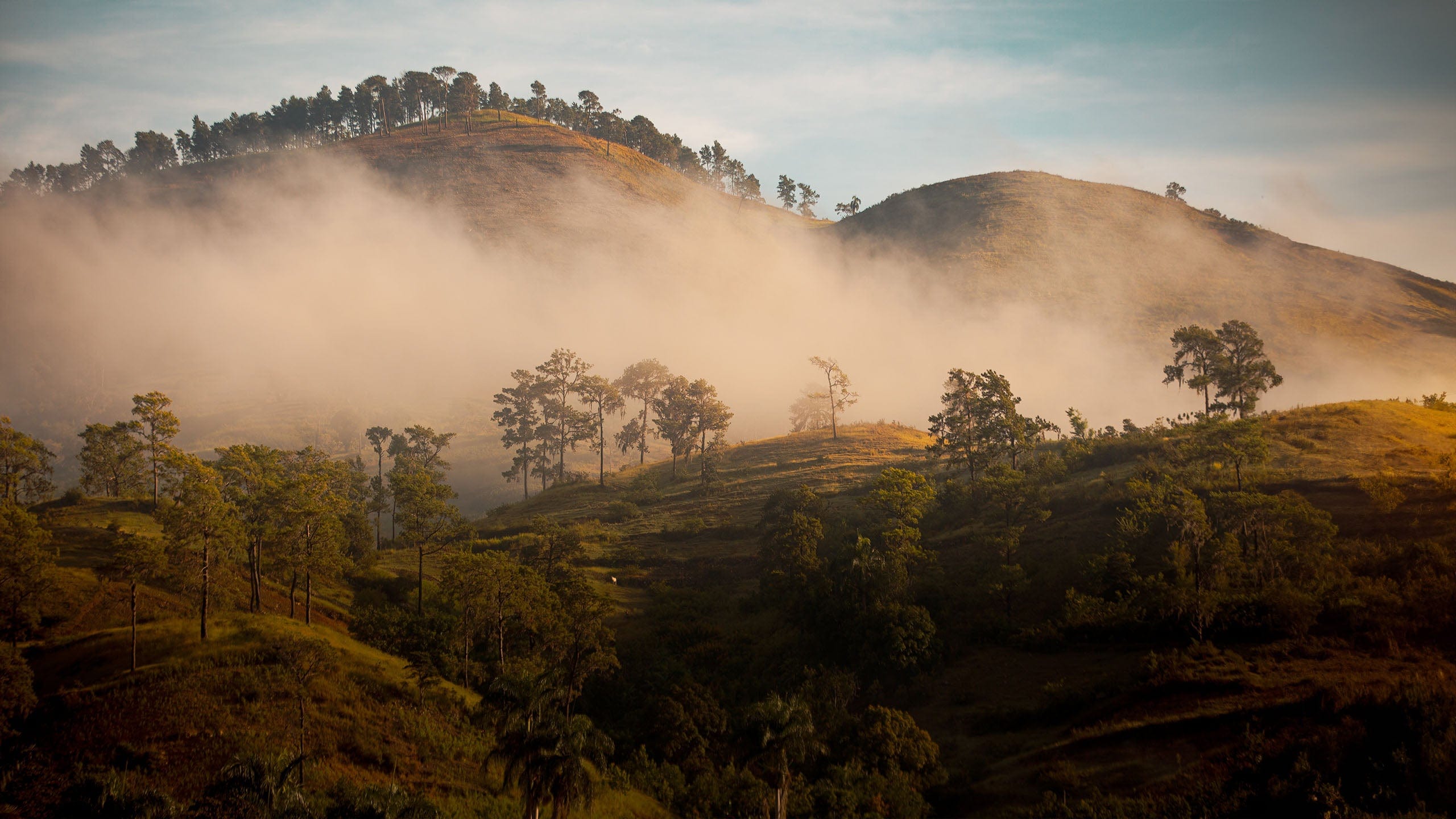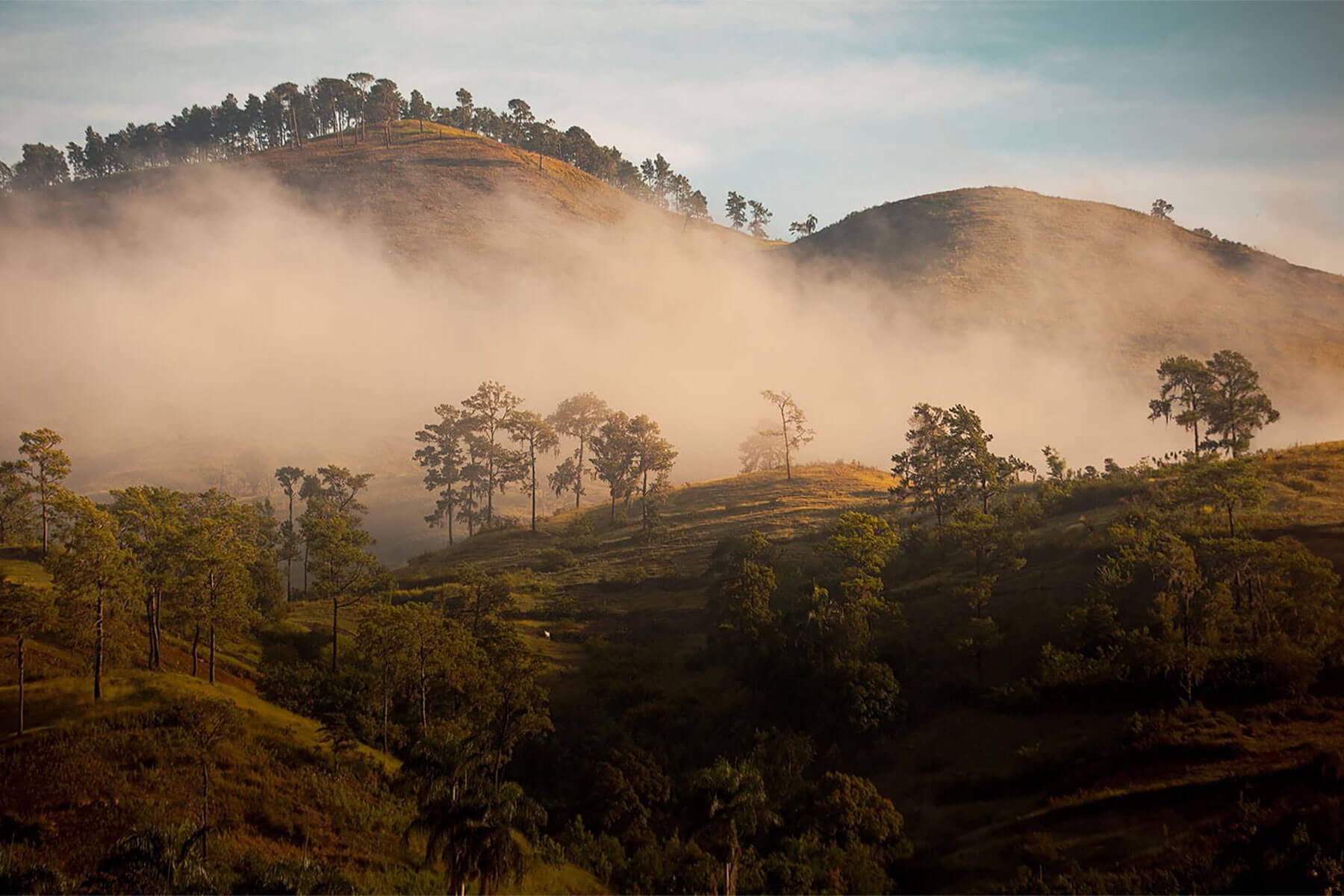Reforestation in the
Dominican Republic
With pristine beaches, evergreen forests, and fertile valleys, the Dominican Republic is home to the most diverse topography in the Caribbean. The terrain of this beautiful country includes rainforest, savanna, and highlands — and the towering Pico Duarte, the Caribbean’s tallest mountain. Not only does its beautiful landscapes set this country apart, the Dominican Republic is known for producing some of the world's favorite crops, including mangos and coffee.
The Dominican Republic faces profound climate-related threats, including flooding, mudslides, increasing temperatures, salinization, rising sea-levels, and coastal erosion. Located within the Atlantic Hurricane belt, it's highly vulnerable to hurricanes and storms. Inland, its landscapes are threatened by deforestation, soil erosion, contamination, harmful agricultural practices, pollution, and more. This impacts water quality and soil health, creating challenges for farmers that depend on the land for their livelihoods.

the Dominican Republic Stats
381,000
Hectares lost
Between 2001-2023, the Dominican Republic lost 381,000 hectares of tree cover.
Dominican Republic Deforestation, Global Forest Watch
1,126
vertebrate species
There are 1,126 known vertebrate species in the Dominican Republic.
Biodiversity/Dominican Republic, UNEP Interactive Country Fiches
43.6%
Forested
Approximately 43.6% of the Dominican Republic is forested.
The Dominican Republic launches its National Forestry Inventory, Instituto Interamericano de Cooperación para la Agricultura
8
Terrestrial ecosystems
The Dominican Republic has eight distinct terrestrial ecosystems.
Biodiversity/Dominican Republic, UNEP Interactive Country Fiches
35
Biodiversity areas
35 Key Biodiversity Areas have been identified, covering 18% of the country’s territory.
Biodiversity/Dominican Republic, UNEP Interactive Country Fiches
Project Highlights
Reforestation in the Dominican Republic focuses on revitalizing deforested land to help smallholder farms increase their crop production, and empowering local communities to participate in tree planting. Learn about two recent reforestation projects that planted trees in the Dominican Republic!

Restoring Watersheds & Agroforestry
This project plants trees to improve watershed health and benefit downstream actors. Specifically, in the border region, this project will benefit the Artibonite watershed, which impacts water supplies in both the Dominican Republic and Haiti. Reforesting and regenerating this watershed is incredibly important for both the Dominican Republic and Haiti, as millions of people rely on it as their main source of water.
Lagoona Cabarete
This project aims to replant mangroves to restore ecosystem balance, creating a sanctuary of marine life, reducing pollutants, and providing shade to maintain cooler temperatures. With each tree planted, fishermen and vulnerable communities at risk will benefit. Local community members will also be engaged in the planting, empowering them to make an impact in their local ecosystems.


Hog and Sheep Fire Restoration
This project reforested areas that were impacted by the 2020 Hog and Sheep fires. These high-severity fires heavily damaged local watersheds and habitat areas. Planting trees helped to restore habitat, improve soil stability, and increase carbon sequestration. Seedlings were planted at variable densities depending on slope, aspect, soils, site class, and soil moisture in late winter to early spring.



